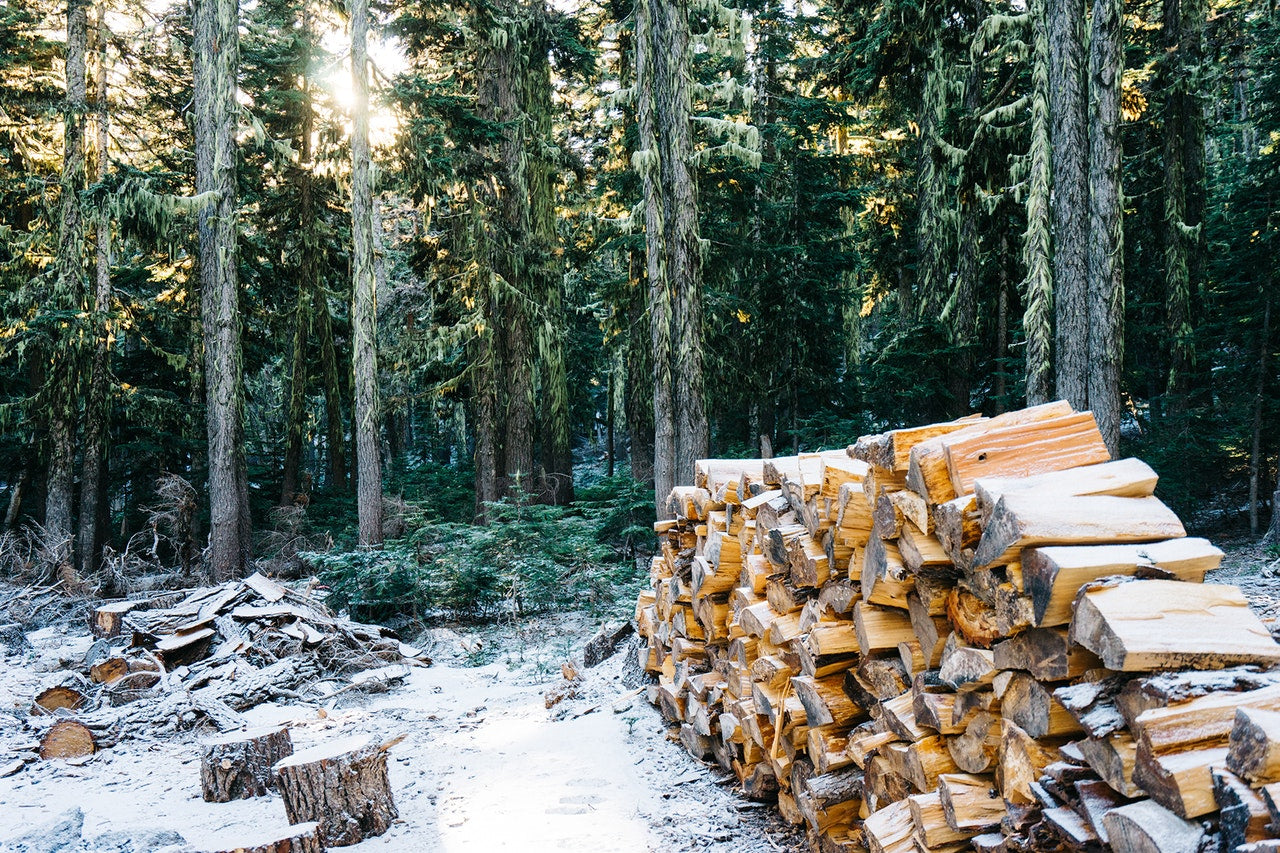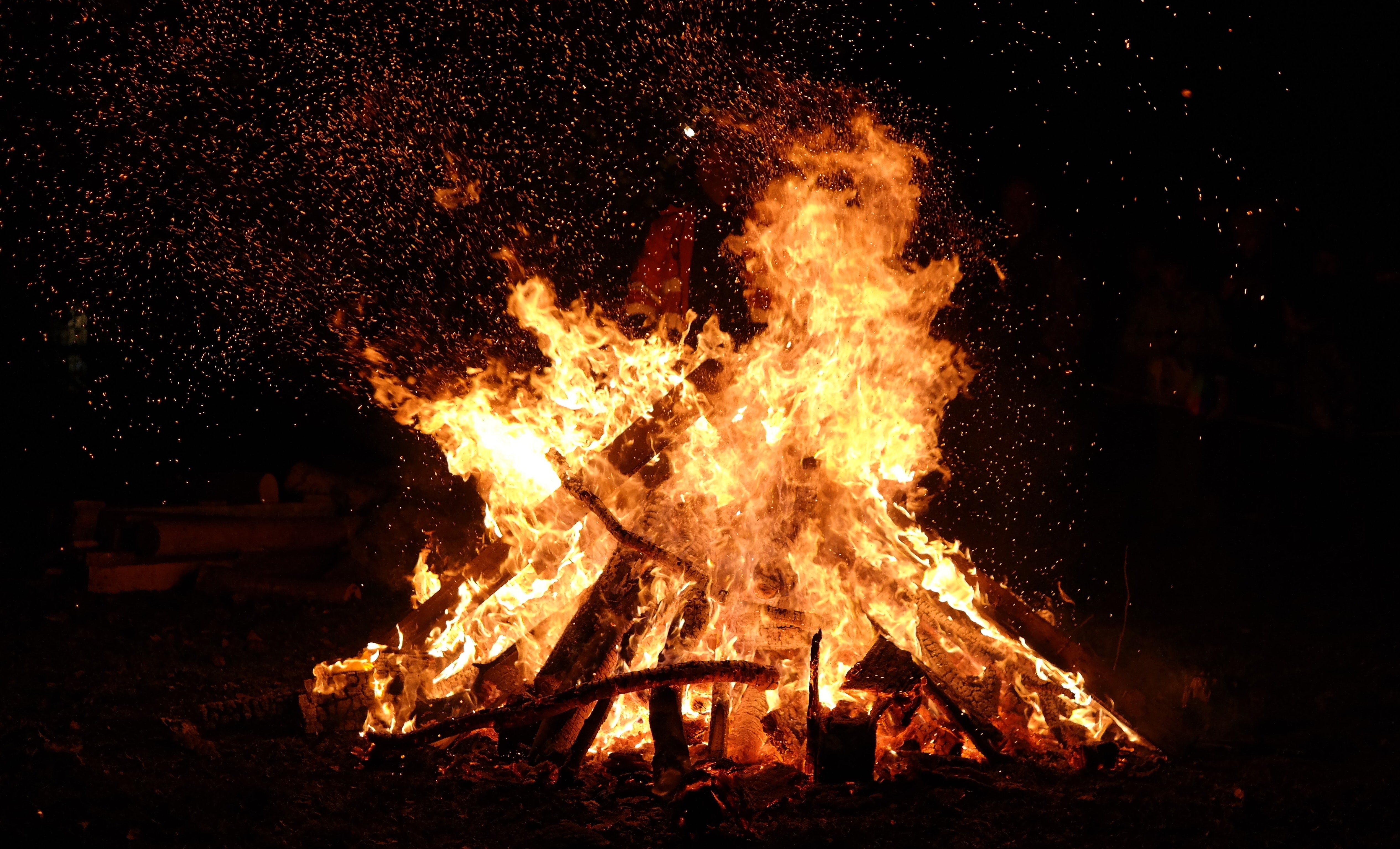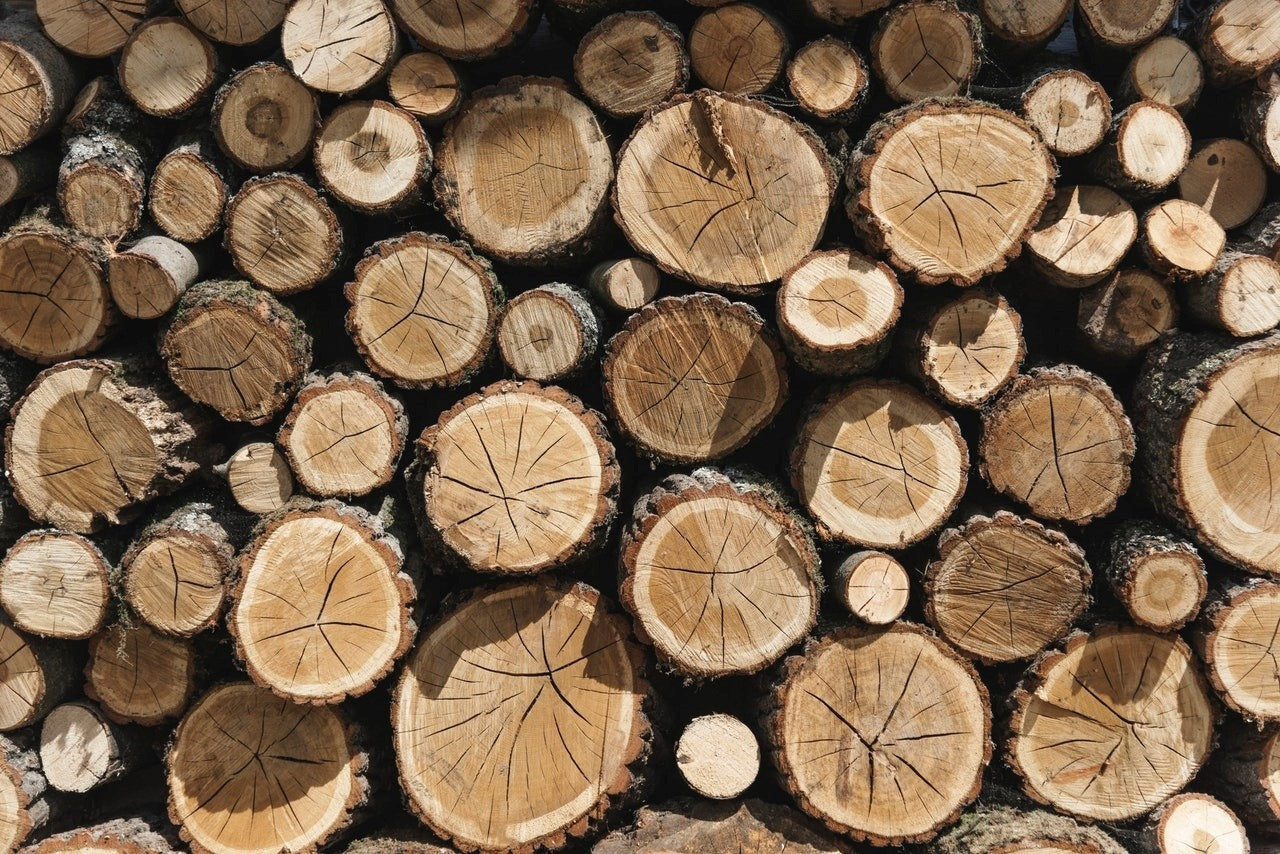You may have heard of the 4 C's of diamond buying, Walden Backyards has the 4 S's of managing the firewood for fire pits. Those four S's include: splitting, schlepping, stacking and storing. Here are the definitions and tips for each one:
Splitting Logs
Splitting logs enhances how they burn because it exposes the more flammable interior of the log. Trees for firewood are usually cut into 14 to 16 inch lengths and then divided or split to expose the inner wood. Typical log splitting divides the log in half, and then half again, creating quarter pieces of the initial log. Here are some log splitting tips for easier and safer splitting:
- Location. Choose level ground that is free of people and pets, because staggering downhill toward your wife brandishing an ax can't end good.
- Gear and Clothing. Use footwear with solid traction and of durable construction. Your wood-splitting hero costume won't be complete without quality gloves and eye protection.
- Equipment. You want a large, solid chopping block that is flat on both ends and an 8 lb. splitting maul with a fiberglass handle.
- Conditions. Cooler air temperature is better because wood breaks and shatters easier in colder air, so fall and winter time are best. Seeing your breath while you work makes you feel more like a super hero too.
- Technique. Use a wide stance and swing downward in a smooth stroke, targeting the center of the log.
Schlepping Firewood
This is a Yiddish word that means "to drag" or "to haul." Schlepping your wood may take on various forms depending on the equipment you have available. Typical haulers include:
- trailer
- wheelbarrow
- wood hauler
- wood carrier
Back injuries and back strain can be avoided if you take your time and don't overload yourself. Don't overload your trailer either. A bent or broken axle will turn your wood managing efforts into an expensive prospect.
Stacking Wood
The goal of stacking wood is to help it dry or keep it dry so that it will burn better when it comes time to be used. Here are some tips for wood stacking that will help enhance the quality of your wood-burning experience:
- Location. Find an area with level ground that is sheltered and away from the house in order to prevent bugs from leaving the woodpile and entering your home. If a shed is not available have a quality tarp to cover the wood.
- Surface. Stack your wood on a dry, firm surface or on a log rack, which also provide airflow underneath the wood.
- Stacking technique. Stack a row of bad wood along the bottom. Stack wood firm enough so it won't fall, but loose enough that air can flow through it. Some stack raw side up for better seasoning and other prefer raw side down to avoid exposure to the elements. Seasoning should be for no more than 2 to 3 years as wood may begin to rot after after too many seasons.
- Rotate Your Stock. Just like a grocery store shelf, you want to use up the older stock first. When you bring in new wood, place it on the bottom of the rack and stack the older wood on top.
Storing Wood
The primary goal in storing wood is to keep it dry. Preventing rain and snow from getting to your wood is a must. You can improve your chances of having plenty of dry wood by proper storage, including:
- A quality tarp that you can tie and weigh down.
- Use your garage or a broad overhang of your house, but you may have to deal with bugs coming out of the wood and into your home.
- A wood shed away from the house is the best place to store wood away from the elements.
Keep the 4 S's of Walden Backyards in mind as you manage the wood for your fire pit. When it comes time to burn the wood you have prepared for yourself, consider our Stoker Poker and Fire Starters to get that fire burning quicker and easier and keep it burning.




Leave a comment
This site is protected by hCaptcha and the hCaptcha Privacy Policy and Terms of Service apply.